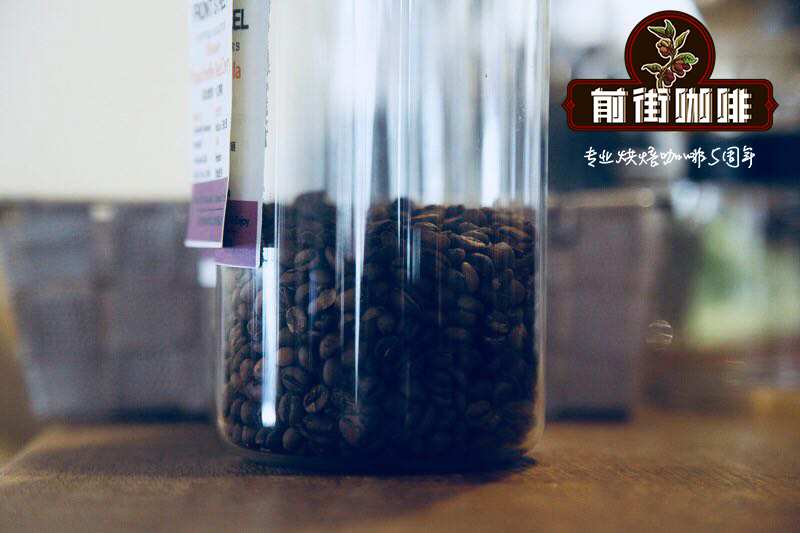Sumatra San Mateo Coffee Features introduction-Sumatran Coffee also has 4C Coffee Certification?

Professional coffee knowledge exchange more coffee bean information please follow the coffee workshop (Wechat official account cafe_style)
Rationale
Principle
An increasing proportion of global coffee production, roughly 40% as of 2013 (Panhuysen & Pierrot, 2013) originates from farms following some form of voluntary sustainability standards (VSS). These programs are expanding into multi-billion dollar global activities, providing industry and consumers with the comfort that the coffee they trade and consume has been produced according to environmental and ethical standards. Yet there is little empirical evidence to suggest these programs have positive outcomes for smallholders. This paper quantifies the impacts of 4C certification, recognized as a relatively more accessible standard,to ascertain the capacity of VSS to improve smallholder livelihoods.
The proportion of global coffee production is growing, with about 40 per cent (Panhuysen&Pierrot,2013) in 2013 coming from farms that follow some form of voluntary sustainability standard (VSS). This voluntary sustainability standard farm is expanding into a multibillion-dollar global campaign that satisfies the industry and consumers that the coffee they trade and consume is environmentally friendly and ethically produced. However, there is not much empirical evidence to show that these have brought positive results to small farmers. This paper quantifies the impact of 4C certification and is considered to be a relatively more accessible standard to determine the extent to which voluntary sustainability criteria improve the livelihoods of smallholders.
Methods
Research methods
The paper compares two groups of farmers, one 4C certified and an uncertified control group, measuring the average treatment effect of certification on a collection of outcome variables. We use a quasi-experimental method relying on propensity score matching (PSM) to control for selection bias. We draw on extensive survey data, of over 1600 households drawn from about 100 farmer groups, covering a broad array of indicators including livelihood determinants, farming practices, market characteristicsand subjective assessments. In addition to the main cross-section from 2015, panel data can be constructed for a number of indicators through leveraging administrative records, allowing us to employ a differences-in-differences impacts estimator.
This paper compares two groups of farmers, a group of 4C certification and an uncertified control group, and measures the effect of certification on a set of outcome variables using average voluntary sustainability criteria. We use a quasi-experimental method to control the selection bias based on propensity score matching (PSM). We use extensive survey data from more than 1600 households from about 100 farmers' groups, including indicators of livelihood determinants, farming practices, market characteristics and subjective assessments. In addition to the major cross-sections for 2015, panel data can be constructed for multiple indicators using administrative records, thus enabling us to use double differential impact estimates.
Results
Result
This paper makes several contributions to knowledge within the global coffee community by, 1. Contributing empirically to the literature surrounding VSS; while several studies have examined certification qualitatively few provide a counterfactual fora causal impact evaluation;2. Advancing knowledge of 4C certification,particularly when not confounded with the introduction of specialty coffee varieties or reputable growing regions; and,3. Contributing to knowledge of the Indonesian coffee sector,which is particularly uniquedue to high smallholder density and weak internal organization (Neilson, 2015)
This paper has several contributions to the global coffee industry: 1. It provides empirical support to VSS literature; although several studies have qualitatively examined certificates, they seldom provide counterfactual causal impact assessment. Promote knowledge on 4C certification, especially not to be confused with the introduction of boutique coffee varieties or reputable growing areas; 3 promote knowledge in the Indonesian coffee sector, this is particularly unique for high and small farm density and weak internal organizations (Nielsen, 2015).
Conclusions & Perspectives
Conclusion and prospect
VSS remain a popular tool to improve smallholder livelihoods, however without proper knowledge of their effectiveness andlimitations standards will remain poorly understood and thus poorly targeted. Importantly this could lead to muted or unintended impacts onsmallholders and their communities. The insights from this paper could provide important inputs to the global debate on the continued evolution of standards.
VSS remains a popular tool for improving the livelihoods of smallholder farmers, but without a proper understanding of its effectiveness and limitations, the objectives will be unclear due to little understanding. It is important that this can lead to silent or unintentional effects on small farmers and their communities. The insights of this article can provide important support for the global debate on the continued evolution of standards.
Reference
1.Neilson, J., 2015. Towards a more competitive and dynamic value chain for Indonesian coffee: Working paper 7, Report produced under the World Bank Technical Assistance Program on Competitiveness and Sustainability of Beverage Crops
2.Panhuysen, S. & Pierrot, J., 2014. Coffee Barometer 2014, Report produced by HIVOS, IUCN Nederland, Oxfam Novib, Solidaridad, WWF.
END
Important Notice :
前街咖啡 FrontStreet Coffee has moved to new addredd:
FrontStreet Coffee Address: 315,Donghua East Road,GuangZhou
Tel:020 38364473
- Prev

Sumatran Honey treated Mantenin Coffee Bean Flavor description what is the meaning of TP?
Professional coffee knowledge exchange more coffee bean information please follow the coffee workshop (Wechat official account cafe_style) 1 TP Indonesian Sumatran coffee farmers are not smart, even some single-minded. It is well known that the varieties of Sumatran coffee are very complex and chaotic, and the varieties are not of high grade. And Sumatran coffee farmers, including the local coffee association until
- Next

Sumatra Lake Toba Coffee Story Starbucks Sumatra coffee beans how much is a pack?
Professional coffee knowledge exchange More coffee bean information Please pay attention to coffee workshop (Weixin Official Accounts cafe_style) Starbucks creative studio designers regard each Starbucks selected card as an independent work of art, Starbucks creative director Ben Nelson said. Our goal is to focus as much as possible on the design process because we know our farmers and bakers are in these special situations.
Related
- Does Rose Summer choose Blue, Green or Red? Detailed explanation of Rose Summer Coffee plots and Classification in Panamanian Jade Manor
- What is the difference between the origin, producing area, processing plant, cooperative and manor of coffee beans?
- How fine does the espresso powder fit? how to grind the espresso?
- Sca coffee roasting degree color card coffee roasting degree 8 roasting color values what do you mean?
- The practice of lattes: how to make lattes at home
- Introduction to Indonesian Fine Coffee beans-- Java Coffee producing area of Indonesian Arabica Coffee
- How much will the flavor of light and medium roasted rose summer be expressed? What baking level is rose summer suitable for?
- Introduction to the characteristics of washing, sun-drying or wet-planing coffee commonly used in Mantenin, Indonesia
- Price characteristics of Arabica Coffee Bean Starbucks introduction to Manning Coffee Bean Taste producing area Variety Manor
- What is the authentic Yega flavor? What are the flavor characteristics of the really excellent Yejasuffi coffee beans?

